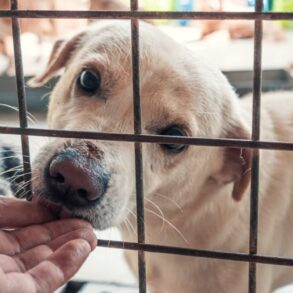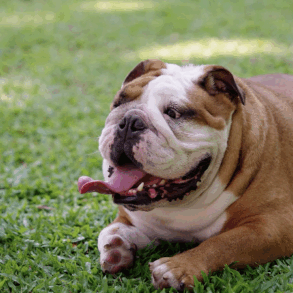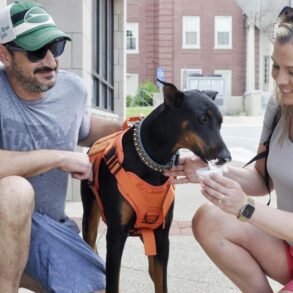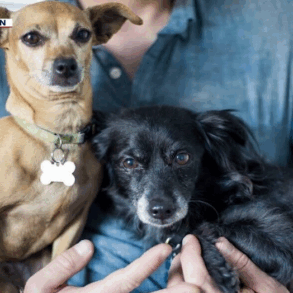Winter is undeniably here, and while you’re bundling up in cozy sweaters, it’s important to remember that our dogs need a little extra TLC to stay warm, too. Dogs, just like us, can feel the chill of the season, whether it’s during those frosty morning walks or in the middle of a snowstorm. But don’t worry—keeping your dog warm is easier than you think. Here, Dr. Nita Vasudevan, veterinarian for Embrace Pet Insurance, offers her expert advice on how to protect your dog from the cold. With these simple tips and a little added love and care, your pup can stay toasty all season long.
Do dogs get cold?
As the temperature drops, it’s important to remember that our dogs are just as susceptible to the cold as we are. “Yes, dogs can absolutely get cold, just like humans,” says Dr. Vasudevan. “Factors such as size, coat type, age, and health condition can influence how well a dog tolerates the cold.”
Large dog breeds with thick coats, like Huskies or Newfoundlands, are generally more suited to colder weather. But even these breeds need protection from extreme conditions. Smaller dog breeds and those with thin coats, like Chihuahuas or Greyhounds, will get cold much faster and may even be at risk for frostbite. A dog’s age and health also play a big role in how they handle the cold. Senior dogs or those with health conditions may need extra warmth, even indoors.
How to know if your dog is cold:
Dogs obviously can’t tell us when they’re uncomfortable, but they’ll certainly show us through their behavior. “One of the clearest signs your dog is feeling the chill is they may try to conserve body heat by curling into a ball,” Dr. Vasudevan says. “They may stop moving or refuse to go outside in cold weather. Your dog may try to find warm spots, like a heater or a blanket.”
If you notice your dog exhibiting these behaviors, it’s important to pay attention. Whining, tucking their tail, or refusing to walk are also signals they’ve had enough of the cold.
In more severe cases, cold exposure can lead to frostbite or hypothermia.”If you notice any signs of frostbite or hypothermia—such as pale or blueish skin, extreme lethargy, or slowed breathing—seek veterinary attention immediately,” Dr. Vasudevan says.
How long can a dog be outside in winter?
For most dogs, it’s safest to limit outdoor time to short potty breaks and a bit of play. If it’s bitterly cold, it’s best to bring them inside after just a few minutes. “In most cases, it is not safe to leave dogs outside for extended periods during winter, especially in freezing temperatures,” says Dr. Vasudevan. “Dogs can suffer from frostbite and hypothermia, just like people. Even breeds that are more cold-tolerant should have access to shelter and warmth. The general rule is that if it’s too cold for you to be outside comfortably, it’s likely too cold for your dog.”
As a guideline, she suggests limiting outdoor time to 10–15 minutes for small or thin-coated dogs in freezing temperatures, and 30 minutes or more for larger breeds.
How to keep your dog warm this winter:
There are plenty of ways to keep your dog cozy when the temperatures drop. Dr. Vasudevan recommends ensuring your dog has a well-insulated doghouse that is elevated off the ground and protected from wind and snow. She also suggests using coats or sweaters for dogs with thin fur, and booties to protect their paws from frostbite or de-icing chemicals. “A good coat can help retain body heat, and booties protect paws from harmful chemicals,” she says.
Indoors, provide a warm bed away from drafts, and consider heated beds for older dogs or those with arthritis. Dr. Vasudevan also emphasizes, “Always keep fresh water available, as hydration helps with circulation and temperature regulation.”

Tierney McAfee is a freelance writer and Country Living and The Pioneer Woman contributor who covers entertainment, holiday & entertaining, food & drinks, design ideas, DIY, and more.
This post was originally published on this site be sure to check out more of their content.












































